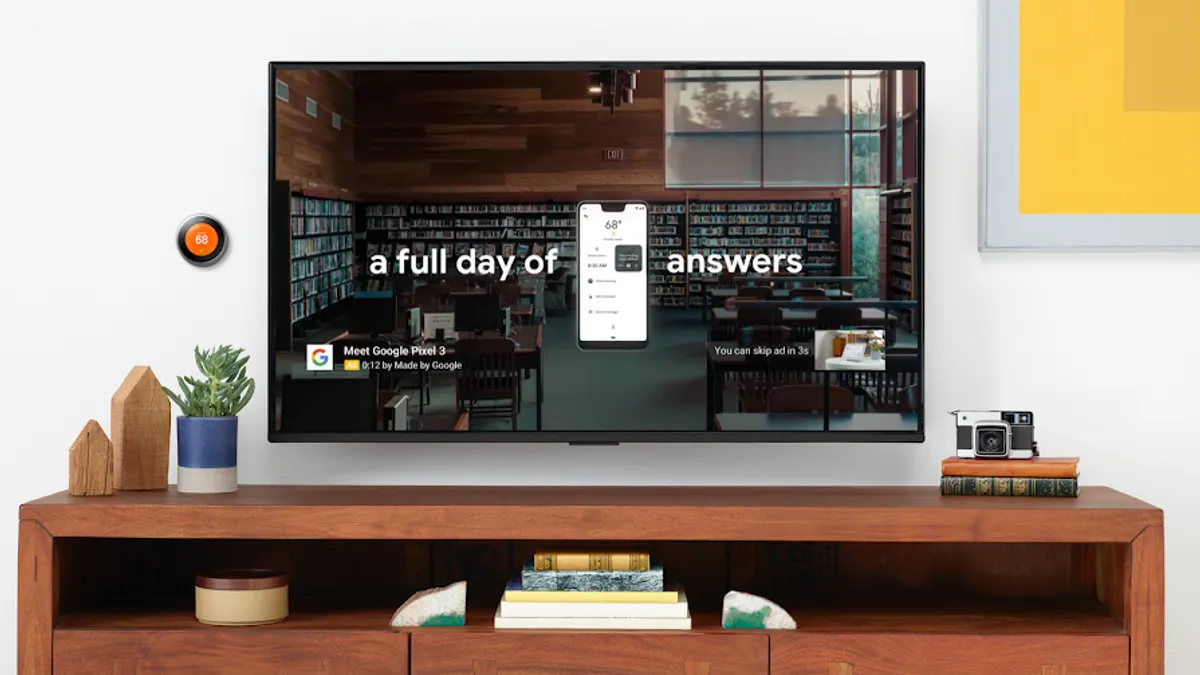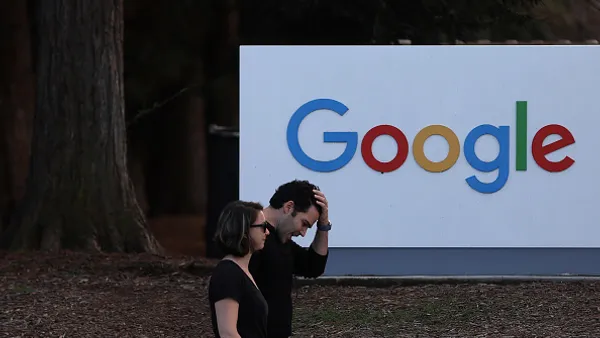Dive Brief:
- Google has improved the forecasting tool in its Display & Video 360 demand-side platform (DSP) with added support for programmatic deals, joining existing support for open auction and YouTube, so marketers can better estimate reach, according to an announcement shared with Marketing Dive.
- The search giant opened more ad inventory on YouTube to media buyers that use DV360. YouTube TV, the platform's skinny bundle of live TV and streamed video-on-demand, is among the content that advertisers can now reserve and manage. Advertisers also can place masthead ads that are prominent in YouTube's home feed, with similar ads on TV screens now being offered in beta. U.S. media and entertainment marketers are testing a new teaser format for the home screen on Android TV.
- Google's expansion of software tools also includes the launch of Unique Reach Audience reporting to help marketers measure the reach of their connected TV (CTV) campaigns among demographic targets instead of a broad group of unique users. Using the Identifier for Advertising (IFA) standard from the Interactive Advertising Bureau (IAB), Google added Unique Reach support for CTV devices, per its announcement.
Dive Insight:
Google's growing support for CTV media-buying services arrives at a disruptive period for TV media buying, as questions arise around the ongoing relevancy of the upfronts — the traditional means by which networks showcase upcoming shows and media buyers commit to future ad packages — as viewers increasingly watch content on demand. This type of content makes fall show premieres less impactful from an advertising perspective than they once were. These issues have only been compounded during the pandemic while consumers are spending more time at home streaming content, potentially opening an opportunity for platforms like Google to gain a stronger foothold in digital media-buying services.
As more U.S. households connect their TVs directly to the internet, marketers are seeking ways to reach audiences that have increased their consumption of ad-supported video-on-demand (AVOD) services. Google's DV360 platform gives those marketers access to the top 50 watched ad-supported CTV apps in the U.S. as ranked by Comscore, and its improved forecasting tool helps to predict how programmatic deals will reach target audiences.
Audience-based targeting has become more essential as advertisers aim to connect with audiences among a variety of screens and video platforms. To avoid the wasteful duplication of advertising efforts, marketers are improving campaign performance by targeting audiences rather than focusing on dayparts that were more meaningful when buying commercial time on traditional outlets like linear TV. With many consumers shifting their viewing to on-demand services, audience-based targeting has gained prevalence.
CTV ad spending is forecast to grow 25% this year, researcher eMarketer predicts, making AVOD media comparably strong amid a broader pullback in media spending during the pandemic. Ad spending on Roku, the CTV provider whose active accounts grew 41% to 43 million in Q2 from a year earlier, said its monetized video ad impressions grew 50% for the period. While the company doesn't break out its ad sales, MoffettNathanson Research estimated that revenue grew 32% to $116 million in Q2 from a year earlier. That growth bodes well for the CTV ad market in the coming year.













